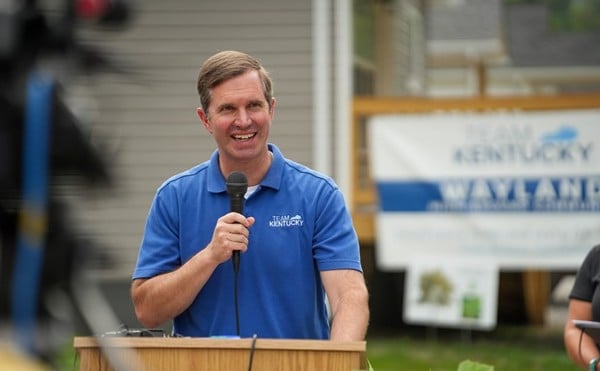Easy and reasonably priced travel is a relatively new phenomenon. It used to be most people did not consider voyaging far beyond their own locality. Bus travel, especially Greyhound, changed that. In the midst of the Great Depression of the 1930s, Greyhound adopted the look of aerodynamic “speed” (in the style called Streamline Moderne) for its buses and terminal buildings in the hopes of thrilling current customers as well as luring prospective ones.
Greyhound found willing partners in industrial designer Raymond Loewy, who revamped the bus design, and Louisville architect William Strudwick Arrasmith (1898-1965). Arrasmith and his various firms (Wischmeyer, Arrasmith & Elswick; W.S. Arrasmith; Arrasmith & Tyler) worked for Greyhound from 1937-60, designing, according to Arrasmith’s estimate, some 65 terminals and garages in states east of the Mississippi River.
The terminals still in existence have developed a cult following. While doing research for the restoration of the 1948 Cleveland station, author Frank Wrenick realized little has been written about Arra (Arrasmith’s nickname) and his Greyhound terminals. His book, 18 years in the making, covers Arrasmith’s career, the history of the streamline Greyhound terminals, description of 28 stations and a chronology of architectural firms and commissions.
Since Arra worked the bulk of his career in Louisville, many Louisvillians were interviewed for background information. Most notable was Arrasmith’s chief structural civil engineer, the late Ed W. Baldwin, who worked with Arrasmith for about 15 years and supplied many of the book’s stories and drawings.
The book’s cover shows a rendering of Louisville’s 1937 station at the corner of Fifth and Broadway. Arra’s first terminal for Greyhound. The exterior of the building was covered in “Greyhound Blue” porcelain enameled steel panels and, according to Wrenick, “was an instant landmark. People who had seen the new terminal the night of its grand opening readily recalled, over 60 years later, the indelible impression the sight had left on them.”
Arrasmith died in 1965, ironically around the time when the city was considering demolishing the terminal. By 1970, a new station had been built at 720 W. Walnut St. (now Muhammad Ali Boulevard). Many Arrasmith terminals in other cities have been renovated, including the 1939 Evansville, Ind., station, currently on the National Register of Historic Places. The one in Washington, D.C., built in 1940, is now being used as a lobby for a 1991 high-rise building.
Arrasmith’s presence in Louisville continues to be felt in the current architectural firm that bears his name (Arrasmith, Judd, Rapp, Chovan Inc.) and in his many buildings that are still standing, such as Bowman Field (built in 1929), the 800 Building (1960) and residences scattered around the city.
“The Streamline Era Greyhound Terminal” can be ordered at local bookstores or by contacting the publisher at www.mcfarlandpub.com or (800) 253-2187. I predict this book will have a cult following as well.





